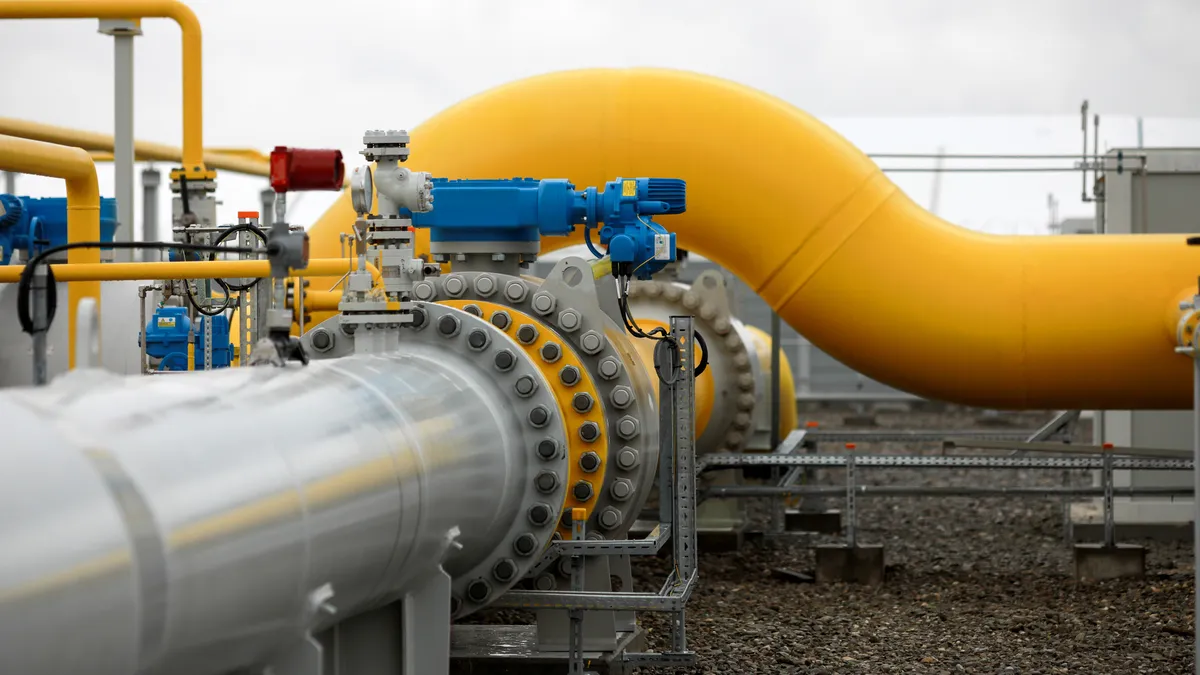Dive Brief:
-
New Jersey has adequate natural gas pipeline capacity to handle most expected conditions this decade, the state utility agency and rate payer advocate said Monday in a joint filing with the Federal Energy Regulatory Commission as part of the agency’s review of a proposal by a Williams Co. subsidiary to expand a major pipeline in the region.
-
Following a two-year stakeholder process, the New Jersey Board of Public Utilities late last month approved the conclusions of a London Economics International report that found under most demand scenarios, New Jersey is well-positioned with available interstate pipeline supply beyond 2030, according to the filing at FERC.
-
“LEI’s analysis supports the argument against the need for additional interstate pipeline capacity, including projects like PennEast [Pipeline],” the BPU said in its June 29 order.
Dive Insight:
The debate over New Jersey’s gas needs comes amid a broad argument over the future of existing and planned U.S. natural gas infrastructure as the effects of climate change grow. New Jersey aims to have emissions-free energy by 2050.
The issue centers on a proposal by Transcontinental Gas Pipe Line Co., a Williams subsidiary, to expand capacity on its Transco pipeline with new and upgraded facilities in Pennsylvania, New Jersey and Maryland.
The Regional Energy Access expansion project would increase Transco’s pipeline capacity by 829,000 dekatherms a day to deliver gas from northeast Pennsylvania to the three states.
FERC staff issued a draft environmental impact statement for the project in March. Among the draft report’s findings, staff said building the project would mostly affect environmental justice communities, but those effects wouldn’t be disproportionately high and harmful. Staff also said the project would produce 16.6 million metric tons of carbon dioxide a year from operations and downstream emissions.
The need for gas is growing across the states the project would serve, according to a report Levitan & Associates prepared for Transco that was filed at FERC in April.
However, LEI reached “a materially different conclusion,” the BPU and the New Jersey Division of Rate Counsel, which represents ratepayers, told FERC, noting the LEI report addresses a threshold issue the commission must consider when reviewing proposed gas infrastructure: whether it is needed.
LEI concluded that New Jersey “can easily meet” firm demand under normal winter conditions, during colder-than-normal weather and in the case of a “design day,” the coldest day of the year, through 2030 using existing pipeline capacity, the BPU and ratepayer advocate said.
LEI identified eight non-pipeline alternatives that could help New Jersey meet its gas needs, including electrification of the building sector. LEI also found that reaching half of the state’s integrated energy plan’s recommended building electrification through 2030 would address any gas supply shortfall, according to the BPU’s order.
“And further, building electrification would significantly reduce demand by switching customers off of natural gas,” the BPU said.
Some stakeholders, such as Public Service Electric & Gas Co. and the Independent Energy Producers of New Jersey, said the LEI study was flawed, according to the BPU’s order.
Williams aims to bring its expansion project online as early as the fourth quarter of 2024, assuming it receives the needed approvals in a timely manner, the company said in a May report with the Securities and Exchange Commission.















